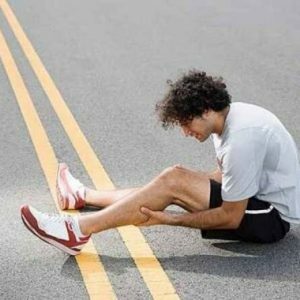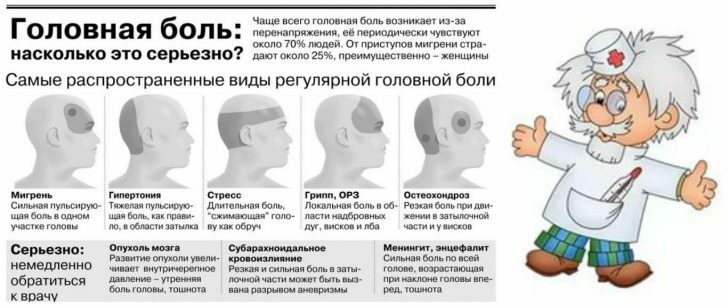Chronic insufficiency of cerebral circulation: symptoms and treatment
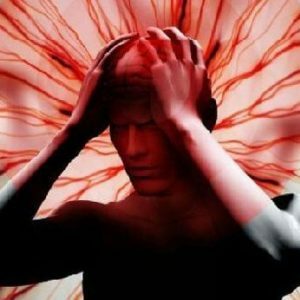
Chronic insufficiency of cerebral circulation( CNMK) is brain dysfunction characterized by slow progression.It is one of the most common pathologies in neurological practice.
Table of contents: Etiological factors Symptoms of chronic cerebral circulatory insufficiency Diagnosis Treatment and prevention measures CNDKEtiological factors
The cause of development of insufficiency, especially common in elderly and senile patients, is small focal or diffuse damage to brain tissue.It develops against the backdrop of long-standing problems with cerebral circulation, since with CNS ischemia, oxygen and glucose are not receiving enough.
The most common causes of chronic ischemia:
-
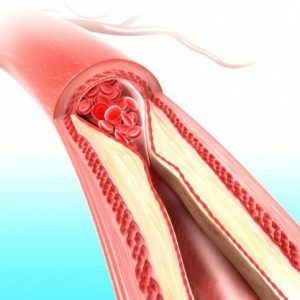 atherosclerotic changes( in particular - cholesterol plaques);
atherosclerotic changes( in particular - cholesterol plaques); - hypertension;
- VSD( vegetative-vascular dystonia);
- chronic heart failure;
- arrhythmias( including paroxysmal);
- diabetes mellitus;
- systemic vasculitis;
- blood disease( with increasing its viscosity);
- vascular lesions in the background of chronic infections( tuberculosis, syphilis).
One of the etiological factors is anomalies in the development of the arch of the aorta and vessels of the neck and shoulder girdle.They may not have an effect before the development of atherosclerosis and hypertension.A certain value is given to compression( compression) of the vessels by bone structures( with curvature of the spine and osteochondrosis) or by tumors.
Blood circulation may be disturbed due to the deposition of a specific protein-polysaccharide complex - amyloid on the vascular walls.Amyloidosis leads to dystrophic changes in the blood vessels.
In elderly people, low blood pressure often becomes one of the risk factors for HNMK.With it, arteriosclerosis, i.e., damage to the small arteries of the brain, is not excluded.
Symptoms of chronic cerebrovascular insufficiency
Important: Among the main clinical features of CNMK include syndromes, staging and progressive course!
It is common to distinguish 2 main stages of chronic cerebral ischemia:
- initial manifestations;
- dyscirculatory encephalopathy.
The initial stage develops with a decrease in blood flow( flow) from normal values of 55 ml / 100 g / min to 45-30 ml.
Typical complaints of patients:
-
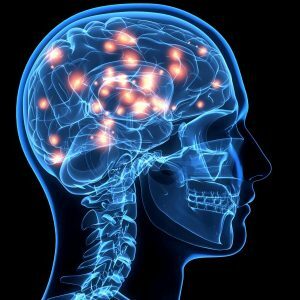 increased fatigue;Short-term episodes of dizziness;
increased fatigue;Short-term episodes of dizziness; - ;
- sleep disorders( sleep disturbances at night and drowsiness during the day);
- periodic sensation of heaviness in the head;
- memory degradation;
- slowing the pace of thinking;
- reduced vision clarity;
- episodes of headache;
- transient sense of instability when walking( imbalance).
In the early stages of the development of cerebral blood flow insufficiency, symptoms appear after physical exertion or psychoemotional stress, starvation and the use of alcoholic beverages.
 No signs of focal changes in the central nervous system are detected in the course of the neurological status determination.Special neuropsychological tests allow us to identify disorders in the functions of thinking( in a mild form).
No signs of focal changes in the central nervous system are detected in the course of the neurological status determination.Special neuropsychological tests allow us to identify disorders in the functions of thinking( in a mild form).
Please note: annually diagnoses up to 450 thousand cases of acute cerebrovascular accident - strokes.Vascular dementia is subject to varying data from 5% to 22% of elderly and senile patients.
Discirculatory encephalopathy( DE) develops against the background of a decrease in flow rate to 35-20 ml / 100 g / min.Changes usually occur as a result of general vascular pathologies.
Note: significant changes in hemodynamics are noted if there is a narrowing of the main vessels up to 70-75% of the norm.
Forms of the DE:
- venous;
- hypertonic;
- atherosclerotic;
- mixed.
Discirculatory encephalopathy is divided into 3 stages depending on the degree of neurological symptoms.
Symptoms of the 1st stage:
- memory deterioration( problems with remembering new information are noted);
- decreased ability to concentrate;
- reduced mental and physical performance;
- high fatigue;
- blunt headache( cephalgia), increasing with psychoemotional experiences and mental stress;
- problems with switching from one task to another;
- frequent dizziness;
- shaky walking;
- insomnia;
- mood worsening;The emotional instability of
- .
The patients' ability to work with the 1st stage has been preserved.During the neurological examination, moderate memory impairment and decreased attention are detected.Reflexes are moderately elevated;Their intensity on the right and left is somewhat different.
Signs of the 2nd stage:
- progression of memory disorders;
- expressed deterioration of sleep;
- frequent cephalalgia;
- Transient dizziness and instability in an upright position;
- darkening in the eyes when the body position changes( rising);
- sensitivity;
- irritability;
- reduced requirements;
- slow thinking;
- pathological attention to minor events;
- a clear narrowing of the circle of interests.
The second stage is characterized not only by the decrease in work capacity( II-III group of disability), but also by problems with the social adaptation of the patient.During the study of neurological status, vestibulo-cerebellar disorders, poverty and slowing of active movements with a specific increase in muscle tone are revealed.
Symptoms of the 3rd stage:
- disorders of thinking, growing to dementia( dementia);
- Tearfulness;
- slovenliness;
- epileptic seizures( not always);
- expressed a decline in self-criticism;
- pathological lack of will;
- weakened control of sphincters( involuntary urination and defecation);
- frequent drowsiness after eating.
Note: for patients at this stage of pathology development is highly characteristic of the Vinshida triad, ie, a combination of memory impairment, headaches and episodes of dizziness.
Patients with stage 3 of dyscirculatory encephalopathy are disabled;They are given a group of disabilities.
Diagnosis
The diagnosis is based on the clinical picture, patient complaints, and the results obtained in the study of the brain and blood vessels.
Note: , there is an inverse relationship between the number of patient complaints for decreased memory capacity and the severity of chronic ischemia.The more a violation of cognitive functions, the less complaints.
During the examination of the fundus, discoloration of the optic nerve disk and atherosclerotic changes in the vessels are detected.When palpation is determined by the compaction of arteries feeding the brain - carotid and temporal.
Among the instrumental methods of investigation, which are necessarily used to verify the diagnosis, are:
- Doppler;
- angiography;
- rheoencephalography with additional samples;
- radiography of the aorta and other major vessels;
- MRI of the brain and vessels of the "cerebral basin"( the main method of neuroimaging);
- electroencephalography.
Additional data are obtained by laboratory tests on the metabolism of lipid compounds, removal of the electrocardiogram and biomicroscopy of conjunctival vessels.
Important: atherosclerosis of cerebral vessels is often combined with atherosclerotic lesions of leg arteries and coronary vessels.
The task of differential diagnosis is to exclude brain diseases that have a non-vascular etiology.It is known that the functions of the central nervous system can be broken again not against the background of diabetes mellitus, lesions of the respiratory system, kidneys, liver and digestive tract organs.
Treatment and prevention measures KhNMK
 When detecting the first symptoms of chronic cerebral ischemia, it is highly recommended to periodically conduct complex course treatment. It is necessary to prevent or slow the development of pathological changes.
When detecting the first symptoms of chronic cerebral ischemia, it is highly recommended to periodically conduct complex course treatment. It is necessary to prevent or slow the development of pathological changes.
Primary prevention of HNMK is in the competence of specialists of general practice - family doctors and district therapists.They should conduct explanatory work among the population.
Basic preventive measures:
- adherence to the normal power supply;
- making adjustments in the diet( reducing the amount of carbohydrates and fatty foods);
- timely treatment of chronic diseases;
- rejection of bad habits;
- regulation of working hours, as well as sleep and rest;
- struggle against psychoemotional overstrain( stresses);
- active lifestyle( with dosed physical activity).
 Important: Primary prevention of pathology should begin as early as adolescence.Its main direction is the elimination of risk factors.It is necessary to avoid overeating, hypodynamia and stress.Secondary prevention is needed to prevent episodes of acute disorders of cerebral blood flow in patients with diagnosed chronic ischemia.
Important: Primary prevention of pathology should begin as early as adolescence.Its main direction is the elimination of risk factors.It is necessary to avoid overeating, hypodynamia and stress.Secondary prevention is needed to prevent episodes of acute disorders of cerebral blood flow in patients with diagnosed chronic ischemia.
Treatment of vascular insufficiency presupposes rational pharmacotherapy.All drugs should be prescribed only by the local doctor or a specialist, taking into account the general condition and individual characteristics of the patient's body.
Patients are shown the course of taking vasoactive drugs( Cinnarizin, Cavinton, Vinpocetine), antisclerotic drugs and antiaggregants to reduce blood viscosity( Acetylsalicylic acid, Aspirin, Curantil, etc.). In addition, antihypoxants are prescribed( to combat oxygen starvation of brain tissue), nootropics and vitamin complexes( including vitamins E and B).The patient is recommended to take neuroprotective drugs, which include amino acid complexes( Cortexin, Actovegin, Glycine).To combat some secondary disorders from the central nervous system, a doctor can prescribe drugs from a group of tranquilizers.
Important: is of great importance for antihypertensive therapy to maintain blood pressure at 150-140 / 80 mmHg.
It is often necessary to select additional combinations of drugs if the patient is diagnosed with atherosclerosis, hypertension and( or) coronary insufficiency. Certain changes in the standard treatment regimen are necessary for endocrine system diseases and metabolic disorders - diabetes, thyrotoxicosis and obesity. Both the attending physician and the patient should remember: taking the medication follows the full course, and after a break of 1-1.5 weeks, start the course of another medication. If there is an obvious need to use different drugs in one day, between the techniques it is important to sustain a time interval of at least half an hour.Otherwise, their therapeutic activity may decrease, and the likelihood of developing side effects( including allergic reactions) - increase.
People who have clinical signs of cerebral circulatory insufficiency are advised to refrain from visiting baths and saunas in order to avoid overheating of the body. It is also advisable to reduce the time spent in the sun.A certain danger is the ascent to the mountains and stay in the areas that are above 1000 m above sea level.It is necessary to completely abandon nicotine, and reduce the consumption of alcohol-containing beverages to a minimum( no more than 30 ml of "absolute alcohol" per day).Consumption of strong tea and coffee should be reduced to 2 cups( about 100-150 ml) per day.Excessive physical activity is unacceptable.Before a TV or a PC monitor, do not sit more than 1-1, 5 hours.
Plisov Vladimir, medical reviewer


